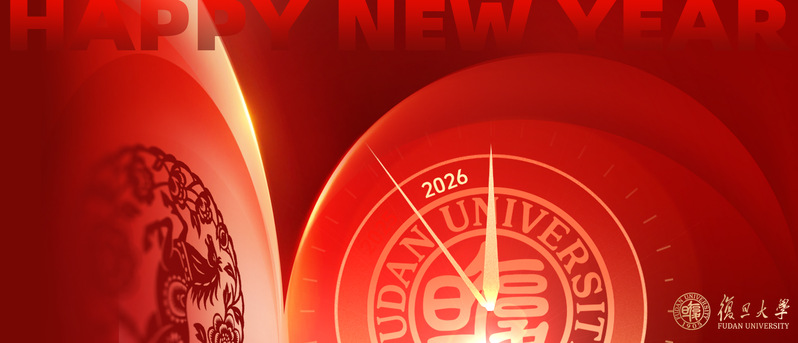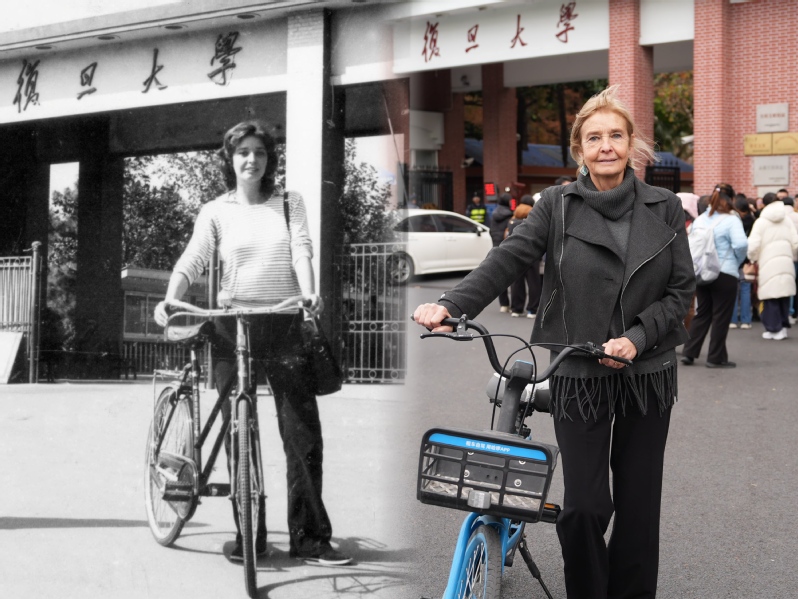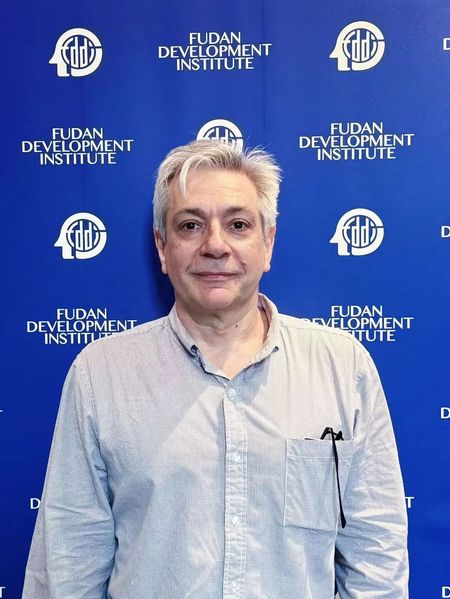Take a peek at how Fudan’s international students learn Chinese language and culture in class.
It’s 18:30 on Tuesday, time for class. Sitting at the desk in his dormitory, Ray Hua, Canadian, a senior Marketing student at Fudan University logs into a study app to attend the lesson online.
The course Hua is taking is Advanced Chinese Ⅱ. It has been selected as one of the top-tier undergraduate courses of 2022 by the Shanghai Municipal Education Commission, as well as two other classes: Intermediate Chinese Audio-visual and Speaking (A/B) and The Study of Chinese Characters.
Offered by the International Cultural Exchange School, these courses adopt the blended learning approach which combines traditional face-to-face classroom teaching with online activities and features student-oriented learning.
As part of the blended learning, the 22-year-old and his classmates watch videos consisting of vocabulary, language points and culture, other than attending the class every Thursday in person.
“Blended learning saves time and gives me control over the pace since I can pause, rewind and fast forward the recorded content depending on my familiarity with it.” Hua said, “if I have any doubt, I can always turn to the instructor in offline classes.”
Dr. Wang Lei has been teaching the course for about ten years, and she shifted the approach from teacher-centered to learner-centered with the adoption of blended education in 2020.
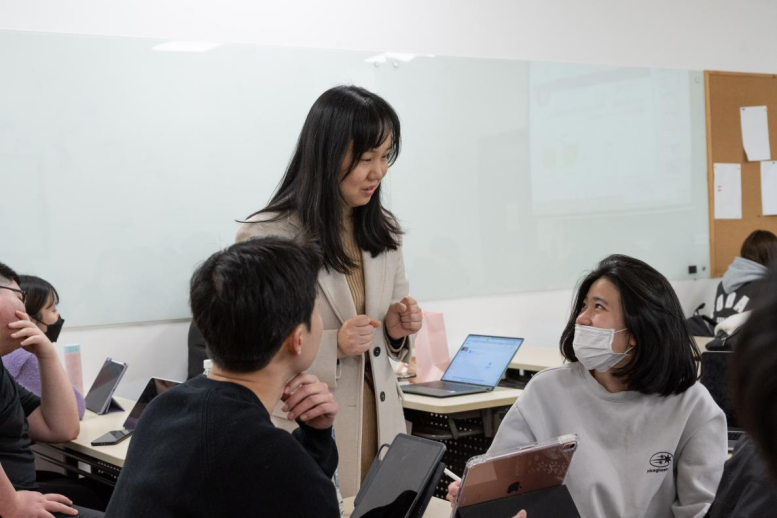
Dr. Wang Lei is communicating with the students.
“Advanced Chinese Ⅱ is open to all the international students on campus, leading to the variety of their academic and cultural backgrounds,” she said.
In order to ignite students’ interest and introduce them to a multi-dimensional modern China, she filled the course with hot topics such as Chinese netspeak, environmental protection, education policies and economic globalization.
“As for me, I’m most intrigued by the lesson of economic globalization. It familiarizes me with professional expressions in financial news, which is beneficial for my future career,” said Son Sung Hyun, a senior from Korea majoring in Advertising, who also takes Advanced Chinese Ⅱ this semester.
Moreover, group work plays a vital part in the classroom, which involves discussion, interaction and cooperation among students. Dr. Wang Lei believes that by giving full play to their strengths in this way, everyone can be better involved and learn from one another.
“There are four other members in my group, whose nationalities and majors are different from mine. I get to expand my social circle and build a diverse network of relationships,” Son said.
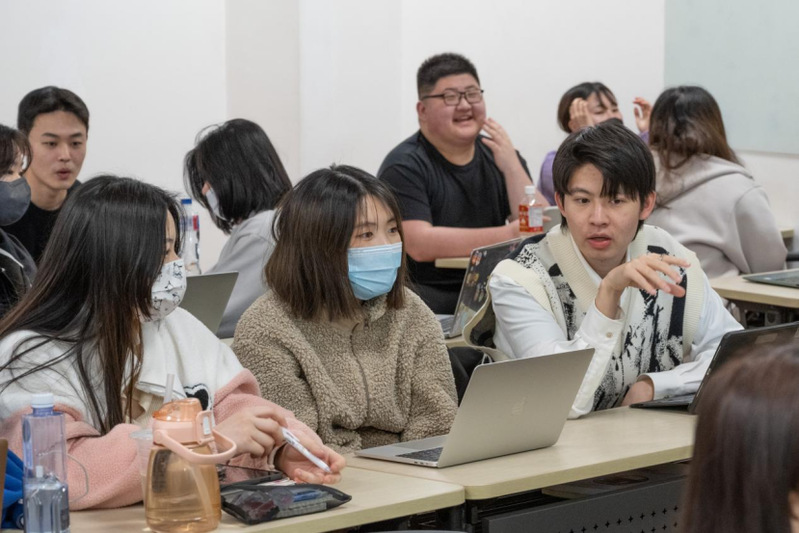
The students are discussing given topics in groups.
Dr. Wang Xiaoman, Senior Lecturer teaching Intermediate Chinese Audio-visual and Speaking (A/B) shares a similar notion with her colleague. Having been teaching for over 20 years, she compares herself to a tourist guide, who leads students in absorbing intellectual views.
The course is compulsory for international undergraduates of Chinese Language. They’re required to finish two videos and the related questions in an online class, and have further discussions in the classroom.
“I remember watching a Chinese TV series called A Little Reunion, which was about gaokao, the college entrance examination in China. The questions were thought-provoking: they made me ponder like I usually wouldn’t,” said Rao Annie Chen, a junior student from the U.S.
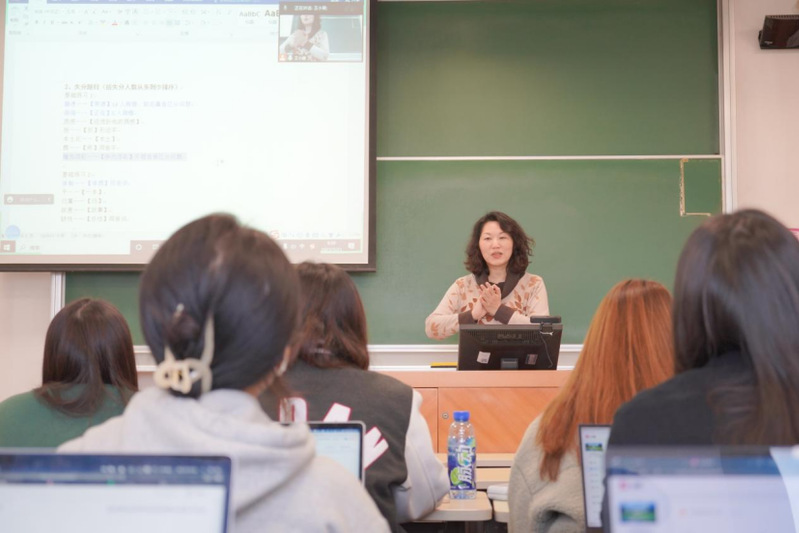
Dr. Wang Xiaoman is addressing common mistakes in the previous assignment.
Jung So Woon, a sophomore student from Korea likes the free atmosphere in class. “We are encouraged to express ourselves. It gives me a chance to use Chinese more profoundly on given topics such as plus-size models in the clothing industry, which are rare in daily conversations,” Jung said.
Dr. Wang Xiaoman regards the course as compensation and enhancement for intermediate learners who have taken beginners’ courses on Chinese reading, speaking, listening and writing.
“There are universal themes that they can sympathize with and dig deeper into. It’s interesting to find that opinions on the same topic vary among individuals,” she said.
Chosen by her and three other members in the teaching team of the course, the video clips ranging from five to ten minutes are obtained from multiple resources and are updated annually.
“One advantage of blended courses is the abundant and direct information in visual materials for the audience to explore. It creates a sense of presence and offers a glimpse into the environment, the people and countless details, which make up the real China,” Dr. Wang Xiaoman said.
Another way to understand China is through the Chinese characters, which condense the culture and history, and reflect unique thinking, according to Dr. Hu Wenhua, the instructor of The Study of Chinese Characters.
“For advanced learners majoring in Chinese Language, this optional course will improve their comprehension of the language to a higher level,” Dr. Hu said, “it’s more about introducing them to a bigger picture and broadening their cultural horizons than simply teaching Chinese.”
She explains the seemingly complex characters by analyzing their appearances, sounds and meanings, and revealing the regularities to improve students’ vocabulary, which is crucial to advanced learning.
For instance, Dr. Hu would split the character “nose” (鼻) into two parts: the top component “self” (自) means “nose” in Chinese oracle-bone inscriptions, while the bottom indicates the character’s pronunciation. Interestingly, some people tend to point to their noses when referring to themselves today.
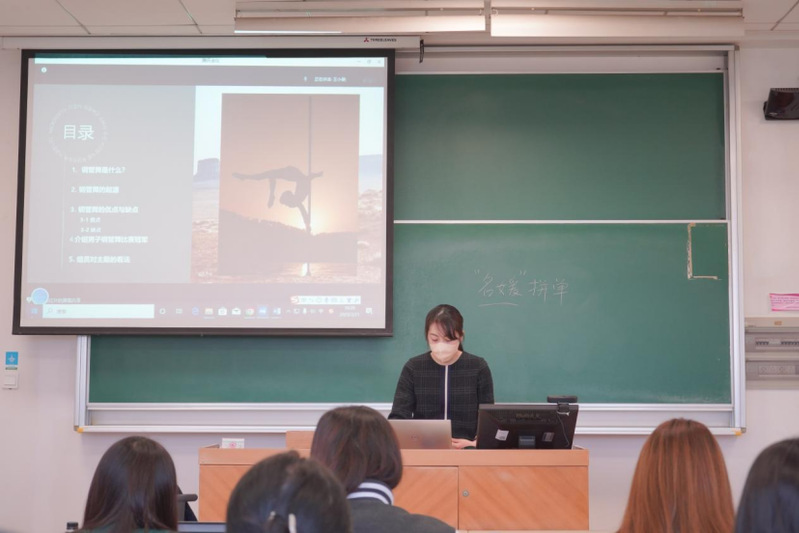
A student is giving a presentation on pole dance.
“Understanding the components of a character instead of learning by rote, I got to know why some characters look the way they do. It has been much easier and more fun to read and write Chinese,” said Ivana Dinić, a Serbian senior student who took the course in her second year of university.
“Despite the fact that the course was initially for juniors and seniors, all the students are now welcome. And sometimes a freshman may outperform the others at the end of the semester,” Dr. Hu said.
“I wanted to withdraw at the beginning because it was too challenging. But Dr. Hu was so helpful and patient that I decided to keep it after two trial lessons. She could simplify the complexity by asking progressive and inspiring questions,” said Park Woo Yeon, Korean, whose friend recommended her the course in her first year at Fudan.
The junior has also benefited from the academic training of the course, and is considering Chinese characters as a possible research subject for her degree thesis.
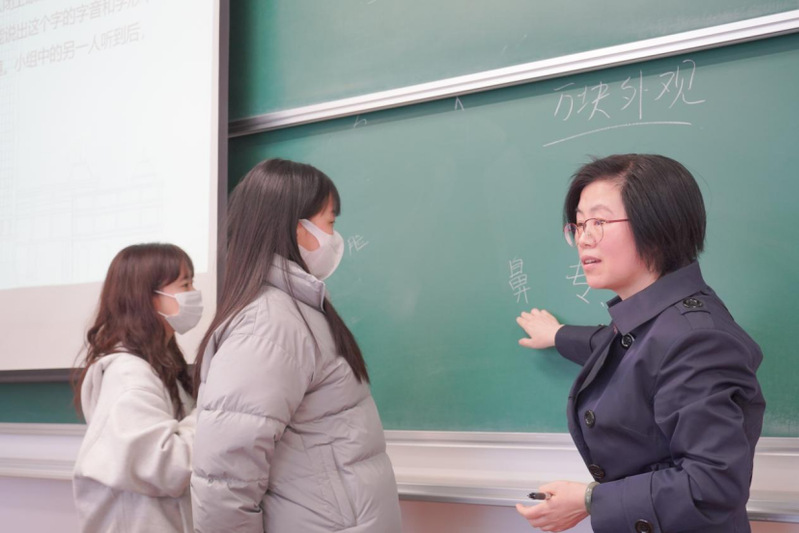
Dr. Hu is explaining the character “nose” (鼻).
Even though the course has received much recognition, Dr. Hu believes there’s room for improvement. “The students who are not very active are sometimes neglected in class. I will try to think of something to pique their interest and resonant with them mentally,” she said.
Dr. Wang Xiaoman is also cooperating with other scholars on China Focus, a Chinese video corpus, where educators and students can search for vivid, visualized and customized materials. Moreover, the classroom of Advanced Chinese Ⅱ will be available to a global audience, as the newly recorded lessons are coming this year on XuetangX, a Chinese MOOC platform. And every Internet user can have access to the course by then.
“It’s hard to anticipate something you’ve never experienced. However, Dr. Hu’s class turned out to not only meet but exceed all my expectations for a university course.” Dinić said, “if you are looking for genuine knowledge, sign up for it.”
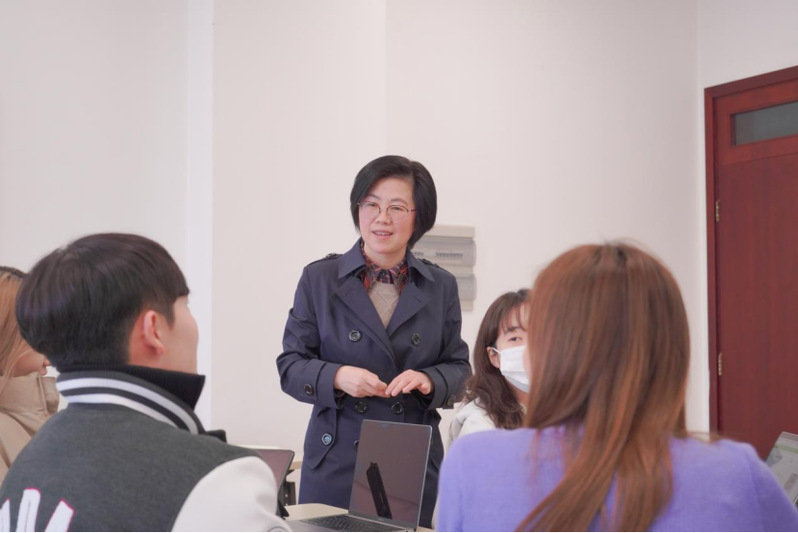
Dr. Hu joins group discussions.
(END)
Presented by Fudan University Media Center
Writer: Li Yuan
Editor: Wang Mengqi, Li Yijie
Photographer: Zhang Huaiyi, Zhang Qinwen
Designer: Jia Yingyue


